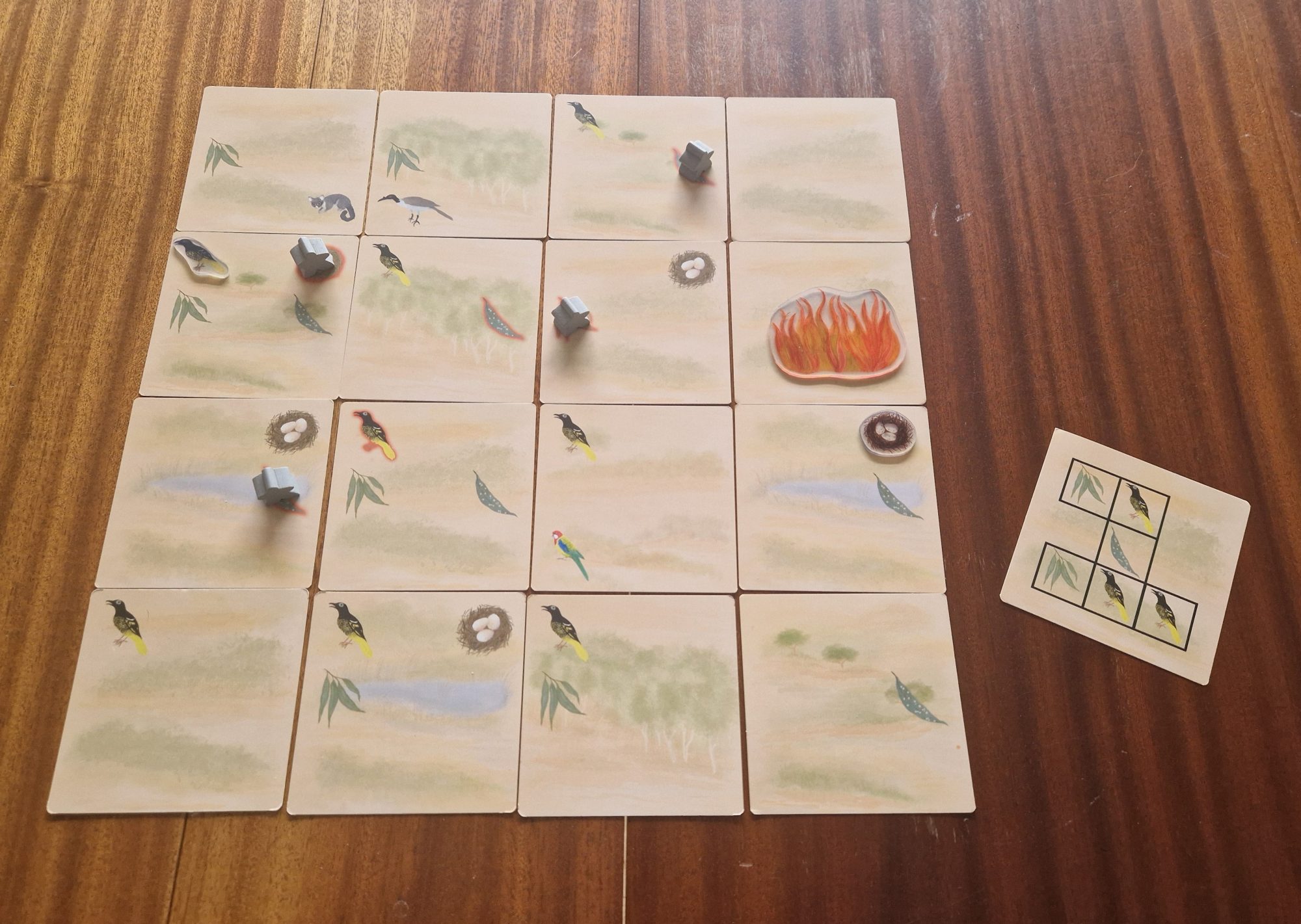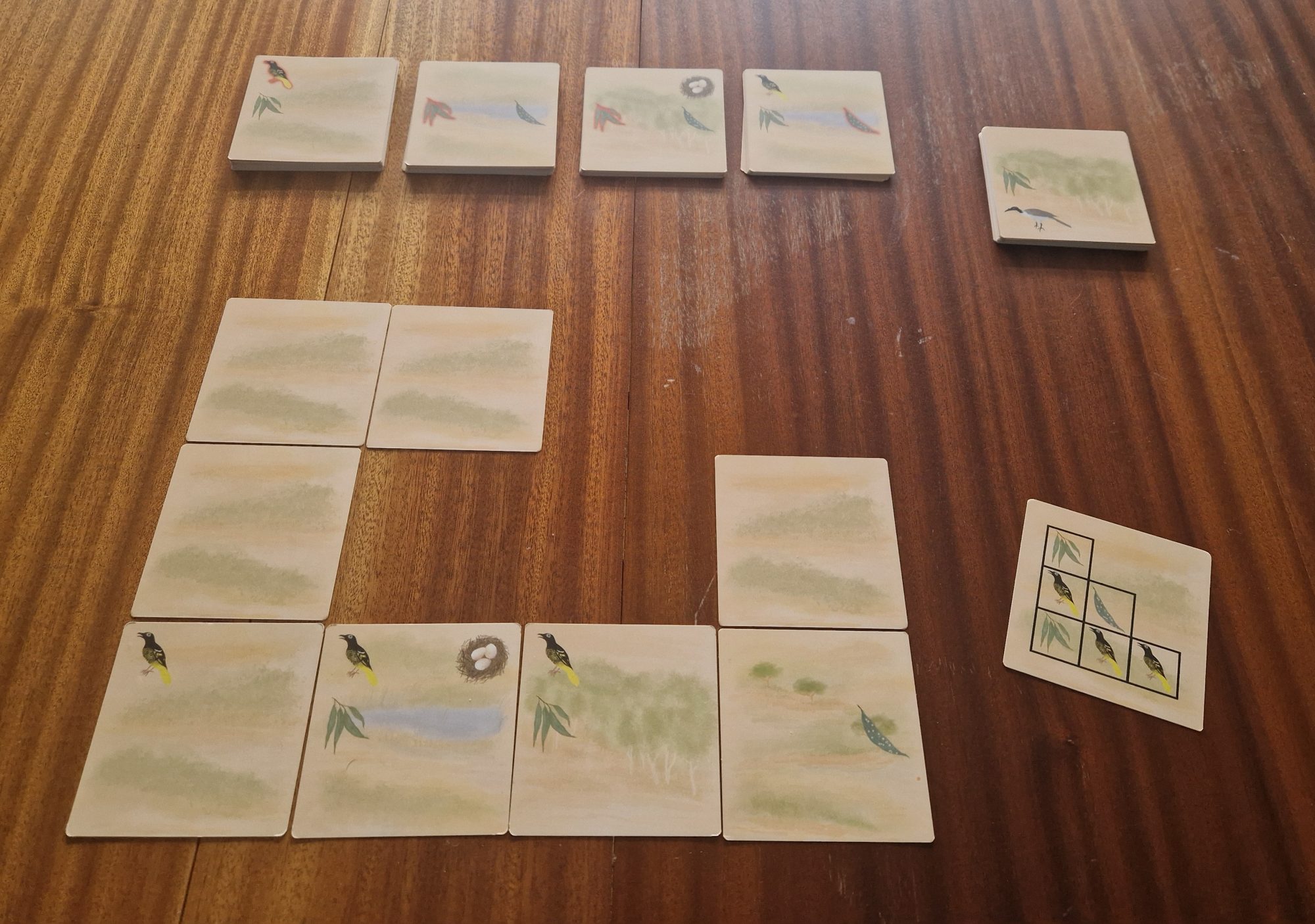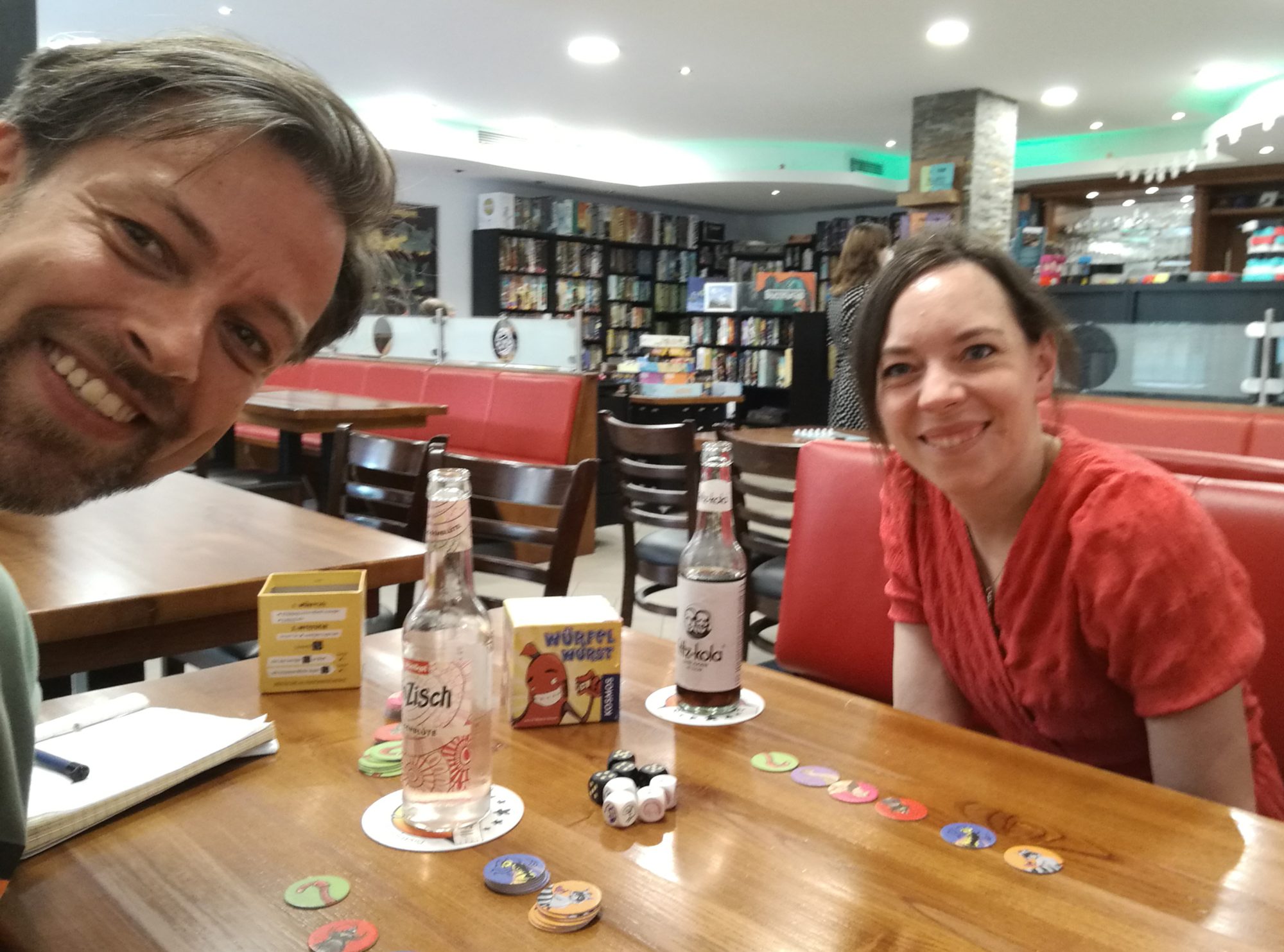af Martin Bødker Enghoff & Tine Bonde Christensen

Hjælp en flok sangfugle med at overleve og huske deres falmende sang. I Australien er sangfuglen Regent Honeyeater truet, da dens naturlige levesteder forsvinder. Uden voksne fugle kan ungerne ikke lære deres forfædres parringssang. I dette hukommelsesbaserede briklægningsspil skal du skaffe føde og navigere i forskellige farer for at holde fugleflokken og deres unikke sang i live.
Foromtale
- Tid: 120 min
- Spillere: 2 – 4
- Sprog: Dansk/Engelsk
Hver spiller styrer en flok af Regent Honeyeater sangfugle, som kæmper for at huske deres unikke sang og bygge det bedste habitat i et miljø, der er under stigende fare fra menneskelig aktivitet og naturlige fjender. Det foregår ved at man vælger brikker der placeres med billedsiden nedad i et tableau der senere afsløres og giver point ud fra de mønstre der er blevet lavet.
Man vælger to brikker ad gangen fra fælles bunker af brikker med gode symboler, såsom reder, sangfugle og mad, men også dårlige symboler som rovdyr og konkurrerende fuglearter. Bunkerne har forskellige betingelser for, hvordan brikkerne placeres i habitatet. Det repræsenterer, hvor langt fuglene flyver for at finde det, de har brug for. Tager du en sikker brik fra en bunke i nærheden hvor du kan bestemme hvordan brikken lægges eller vil du flyve længere for at få en god brik, som de andre spillere kan påvirke placeringen af?
Nøglen til spillet er at brikkerne vælges med billedsiden op, men placeres med billedsiden ned i habitatet på 4×4 brikker. Spillerne skal derfor huske hvilke brikker de lagde hvor, ligesom Regent Honeyeaters skal huske deres sang.
Når alle habitater er færdige, skiftes spillerne til at vende deres brikker i et forsøg på at matche symbolerne til de mønstre af reder, fugle, mad og selvfølgelig flokkens sang, som giver point. Hvis der er et dårligt symbol på en brik, der bliver vendt, har det en negativ effekt: Det kan for eksempel være at brikker bliver byttet rundt. En vigtig pointe er, at man ikke behøver at vende alle éns brikker, men kan stoppe hvornår man vil. Er du sikker på hvor du lagde den irriterende Noisy Friarbird, som forstyrrer dine fugles parringskald eller er det sikrest at stoppe med at vende brikker, selvom der stadig kunne være gode symboler tilbage?
Herefter bygges habitaterne forfra to gange. Hver gang bliver brikkerne, som man kan vælge dårligere og dårligere, for at symbolisere at levestederne forfalder i takt med at den menneskelige aktivitet stiger. Spillerne kan også placere ild i hinandens habitater for at repræsentere de dødelige skovbrande, der hærger i Australien.
I løbet af spillet skulle spillerne gerne få en følelse af de udfordringer som sangfuglene står overfor, mens de prøver at overleve og huske deres sang i en verden, der forsvinder for øjnene af dem.


Om designerne

Tine har elsket at spille spil siden hun som barn opdagede Den Fortryllede Labyrint. For nylig kombinerede hun den kærlighed med sin fascination for fisk og lavede en alternativ udgave af Wingspan med over 200 unikke fiskekort.
Martin startede med at lave spil i en ung alder, hvor han designede et Heman og My Little Pony-spil med sin søster og forældre.
Det første spørgsmål Tine stillede Martin, var om han kendte Bohnanza og på deres anden date spillede de brætspil i Utterslev Mose indtil det blev for mørkt til at se kortene.
Nu har de slået sig sammen og tager til Fastaval, for første gang for Tine og for ca. hundredende gang for Martin.

Kasper har spillet brætspil i mere end 40 år. Uddannelsen indenfor informationsvidenskab fordrer, at han elsker at dekonstruere spil for at undersøge hvad der gør spillet større end summen af dets dele. Kasper foretrækker strategispil med historiske træk og tydelig inkorporeret tematik. Hans første Fastaval brætspilsdesign ”Witch Hunt” vandt en Otto for bedste brætspil og blev udgivet som “Pagan: Fate of Roanoke” i 2021.



